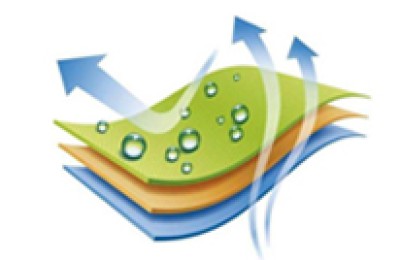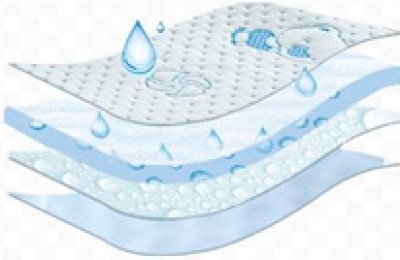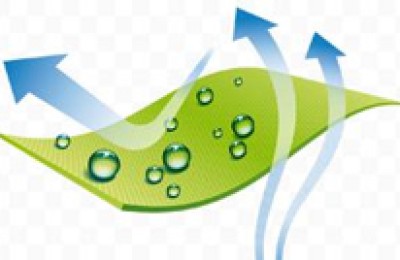Basic knowledge of textiles
Textile basics
1. Raw material analysis
2. Introduction to fabric structure and conventional fabrics
3. Specification calculation and machine process
4. Calculation of raw material consumption and quotation of gray fabrics
one. Woven fabrics
Woven fabric: a fabric formed by vertical interweaving of warp and weft threads according to a certain pattern
1. The distinction between warp and weft, generally:
(1) Fine warp and coarse weft
(2) Warp density > weft density
Warp density: the number of warp threads per unit length, (roots/cm, root/inch, root/10cm)
Weft thread density: the number of weft threads per unit length.
two. Textile raw materials
Textile raw materials: also known as textile fibers
Characteristics of textile raw materials: (1) Have certain strength
(2) It can be extended, can be played back, can be bent
(3) Can be dyed
(4) Environmental protection
(1) Polyester (PET): polyester fiber
1. Characteristics of polyester: stiff and wrinkle-free, washable and wearable
2. Properties: (1) High strength and good wear resistance
(2) Poor water absorption, the official moisture regain is 0.4%, easy to generate static electricity, easy to pilling
The official moisture regain rate is 0.4%: 100g polyester absorbs 0.4g water
Wet weight-dry weight
Moisture regain = —— (Note: wet weight – dry weight = water weight)
Dry weight
(3) Acid-resistant but not alkali-resistant
Alkali reduction: An alkali solution of a certain concentration can destroy the surface of polyester fibers at a certain temperature, making the fabric feel soft
(4) Good corrosion resistance
(5) Good light resistance
(2) Spinning form of polyester
1.FDY (filament) FULL DRAW YARN Fully drawn yarn
Characteristics: The single fibers are arranged in parallel and smooth and straight
2.DTY (low elastic yarn) DRAW TEXTURE YARN Stretch textured yarn
Features: low stretch, fluffy
Large light, light, semi-light, extinction
————-﹥
The luster becomes weaker and weaker
There are generally many semi-gloss ones on the market
Large glossy yarn is a silk with a luminescent agent added, glossy yarn refers to a triangular special-shaped yarn, semi-glossy means that the surface of the silk is round, and matt means that the surface of the silk is not damaged, rough, and non-reflective
3.DTY network yarn (low elasticity network yarn)
Network wire is divided into light network, medium network and heavy network
They are divided according to the number of network points
Light network 30~40/M
China Net 60~70/M
Heavy netting 90~100 pieces/M (heavy netting is free of sizing)
Characteristics of polyester: It shrinks and melts when exposed to fire. When fully burned, it emits black smoke and has an aromatic smell. When fully burned, it becomes a black object and is easily crushed into powder.
75D/72F
F is the number of single fibers
D represents the thickness of the silk thread
D (denier): The weight in grams of 9,000 meters of silk thread at the public moisture regain
D=9000×G(gram)/L(meter)
dtex dextex
dtex =10000×G(gram)/L(meter)
tex tex=1000×G(gram)/L(meter)
D=0.9 dtex
4.Y pre-oriented yarn (not fully drawn yarn)
The characteristics are: stretchable, but not rebound
(The warp and weft threads cannot be made alone and must be combined with other threads)
Twist: T/CM The number of twists of the silk thread in centimeters: one twist and one 360 degree
The twist is divided into left twist and right twist
The way to distinguish is: hold one end in each hand, and twist the right hand into your arms more and more tightly. The left twist is the twist
To Stretch to the Right to Twist if it becomes looser and looser
The difference between strong and weak twist:
Weak twist 0~8T/CM
Medium twist 8~18T/CM
Strong twist 18t /cm above
5.ATY air textured yarn (the surface is not smooth, there are loops, the filaments are short-fibred)
6.CDP polyester cationic
It can produce a two-color effect with ordinary polyester yarn and must be dyed with cationic dyes.
Generally dyed in dark or bright colors
7. Polyester black silk, silk that has been dyed black
Under normal circumstances, FDY and DTY (internet yarn) need to be sized or twisted before they can be made into warp and weft. Only heavy mesh does not need to be sized, which is sizing-free yarn.
8.Polyester slub yarn
&n�� varieties are known as the three sisters of polyester
Spandex﹥PBT﹥nylon high elastic yarn﹥polyester high elastic yarn﹥nylon low elastic yarn﹥polyester low elastic yarn﹥nylon filament﹥polyester filament﹥short fiber
(Elasticity decreases once)
———————–﹥
7. Viscose fiber: CV or R. It is characterized by moisture absorption and easy dyeing. It is often called man-made fiber and hydrophilic fiber
(1) Properties: ① Good water absorption, the official moisture regain is 13%, the hydrophilic fiber is breathable and moisture-permeable, and it is comfortable to wear, especially suitable for hot areas
② The fiber fastness is relatively poor, especially the wet strength, which is 50% of the dry strength. It is easy to break where there is water, the fabric is easy to deform, and the dimensional stability is poor
③The production environment is seriously polluted
↗Viscose filament–﹥rayon–﹥rayon 75D;120D;300D
↘Viscose staple fiber–﹥Rayon–﹥Rayon 30’S
Combustion characteristics: ignites immediately when exposed to fire, burns faster than cotton, smells like burning paper, and has gray-white powder
(2) The difference between rayon and cotton
Rayon: ① Wet strength decreases, 50% of wet and dry strength
②Chemical fiber, the fiber length is consistent and straight
③The burning speed is faster than cotton and the gloss is better than cotton
Cotton: ① The increase in wet strength is 110% to 120% of dry strength
②Natural fibers are baptized by the natural environment, and the fibers have natural bends
③Slow burning speed and dull luster
(3) Mercerization: After the cotton fiber is treated with a certain concentration of alkali solution, the gloss is significantly improved and the strength is increased
(4) Island composite yarn: composed of island yarn and high shrinkage yarn network composite
High shrinkage yarn: The raw material with boiling water shrinkage rate >30% is intended to act as a skeleton
Sea: water-soluble fiber
Island: ordinary polyester fiber
(5) Acetate fiber: The luster is elegant and resembles silk
Properties: ① Semi-phobic fiber, official moisture regain rate is 6%
②The fiber fastness is poor and weaving is difficult
③Glossy like silk, good breathability, soft and smooth fabric
(6) Memory fabric
①The memory fabric must be smoothly twisted
②The fiber density is very good
Disclaimer:
Disclaimer: Some of the texts, pictures, audios, and videos of some articles published on this site are from the Internet and do not represent the views of this site. The copyrights belong to the original authors. If you find that the information reproduced on this website infringes upon your rights, please contact us and we will change or delete it as soon as possible.
AA







